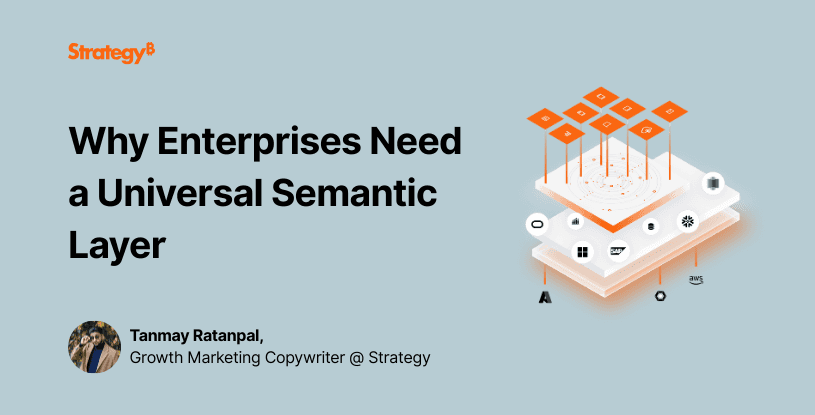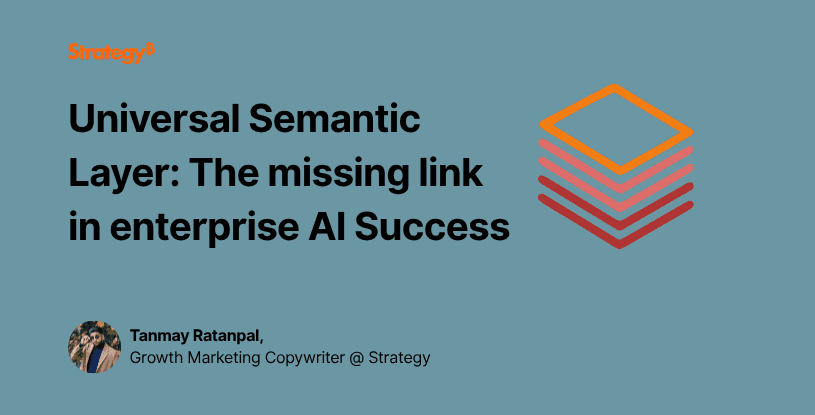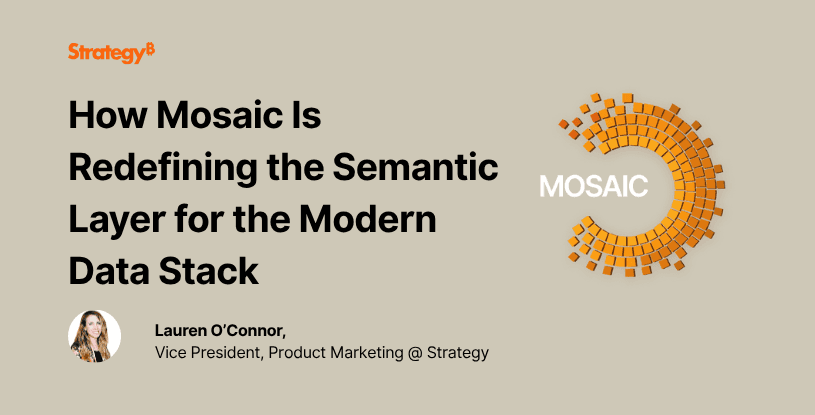A turning point for enterprise semantics: insights from the OSI initiative
The OSI Initiative is uniting industry leaders to tackle one of enterprise data’s biggest challenges: creating a universal, vendor-neutral semantic standard.
Last week, I had the privilege of attending the Open Semantic Interchange (OSI) Initiative meeting in person, a gathering that felt like a turning point for our industry.
Sitting in a room with leaders from Snowflake, Salesforce, dbt Labs, Cube, Starburst, and many others, I experienced genuine collaboration toward a shared vision that goes beyond individual vendor interests.
These weren't just casual conversations. These were meaningful discussions about solving one of the most persistent challenges in enterprise data: the lack of a universal, vendor-neutral standard for semantic models.
Why this moment matters for enterprise semantics
For decades, organizations have struggled with inconsistent data definitions across their analytics stack. Marketing defines "customer lifetime value" one way, Customer Service defines it another, and Sales has their own version.
Multiply that across dozens of teams, hundreds of data sources, and multiple BI or AI tools, and you get chaos: conflicting metrics, eroded trust in data, and endless hours wasted reconciling "the same" number.
Unlike in the past, the industry is finally equipped to tackle these challenges thanks to three converging forces:
First, the explosion of AI applications has made semantic consistency non-negotiable. Large language models rely on consistent business context to produce trustworthy insights. Without a strong semantic foundation, AI hallucinations and inconsistencies aren’t just possible—they’re inevitable.
Second, the modern data stack has matured to the point where interoperability is mission-critical. Enterprises now run Snowflake, Databricks, and BigQuery simultaneously. They rely on Tableau, Power BI, and Looker for data analytics—and they need their semantic definitions to work consistently across every tool and platform.
Third, the industry is finally aligned that these challenges demand open, vendor neutral standards, not proprietary fixes. Every vendor in that room recognized what’s long been true: lock-in might win short-term deals, but it stalls long-term innovation.
The principles for true enterprise semantics
It struck me that our meeting didn't immediately start with a deep technical discussion, but rather we focused on philosophical alignment. Snowflake, acting as an excellent facilitator, helped the group articulate a set of shared principles before moving into implementation details:
- Vendor neutrality: The standard must work for everyone, with no single platform benefiting disproportionately.
- Interoperability first: Semantic models should move seamlessly between systems, enabling true connectivity.
- Extensibility: The foundation must be flexible enough to support diverse use cases, from executive dashboards to frontline workflows.
- Practical value: Vendors must deliver tangible benefits quickly to drive real-world adoption.
The attendees represented an impressive cross-section of the data ecosystem: from established giants like Google and Amazon, to innovators like Hex and Honeydew, BI leaders such as Tableau, data catalogs like Collibra, semantic layer specialists like dbt Labs and Cube, and data platforms including Starburst and Firebolt.
What unified us wasn't competition, it was a shared recognition that our customers deserve better semantic alignment across their organizations.
Strategy's role in the evolution of enterprise semantics
Strategy's participation in the OSI Initiative is a natural extension of the work we've done for decades. Long before "semantic layer" became an industry buzzword, we were building enterprise-grade semantic models that gave organizations a single, consistent view of their business logic.
When we developed Strategy Mosaic, our AI-powered Universal Semantic Layer, we made deliberate choices that align perfectly with the OSI's mission:
- Open connectivity: Mosaic connects to any data source, across any cloud, without lock-in.
- Universal consumption: Any application, from BI tools and AI agents to custom apps, can consume Mosaic's semantics through open standards such as SQL, DAX, and REST APIs.
- Portability: Business logic defined in Mosaic isn't confined to our platform, it's portable and interoperable across environments.
These weren't just design choices; they were strategic investments into the future of enterprise data. Seeing the OSI Initiative unite around these same principles reaffirms Strategy’s long-standing commitment to building a true vendor-agnostic, enterprise-grade semantic layer.
The AI initiative: why it starts with a semantic foundation
As the group discussed the long-term vision for OSI, the conversation naturally gravitated toward AI as the ultimate test of semantic quality.
- When an AI agent needs to answer, "What was our revenue last quarter?", it shouldn't have to guess which definition of “revenue” to use.
- When a data scientist builds a predictive model, the features should carry unambiguous business meaning.
- When an executive requests a dashboard, metrics should be consistent across every visualization.
This effort requires more than just technical interoperability. It demands semantic intelligence: the ability for systems not only to just exchange data definitions, but also to understand their business context, lineage, and relationships.
That’s where a rich, independent semantic layer becomes essential. A thin metadata layer or simple catalog isn’t enough. Organizations need business logic that’s sophisticated enough to manage the complexity of enterprise analytics, yet open enough to integrate seamlessly across the entire data ecosystem.
What’s next for enterprise semantics
The OSI Initiative is just beginning, but the momentum is clear.
The priority is establishing the core semantic concepts: the foundational building blocks that everyone can agree on. From there, the focus will expand to more advanced capabilities such as lineage, governance, AI context, and beyond.
For Strategy, this journey reinforces our long-standing commitment to openness, interoperability, and customer choice. Through the OSI Initiative, we’re bringing decades of semantic innovation and thousands of enterprise lessons to shape the future of enterprise analytics.
.jpeg&w=750&q=75)





